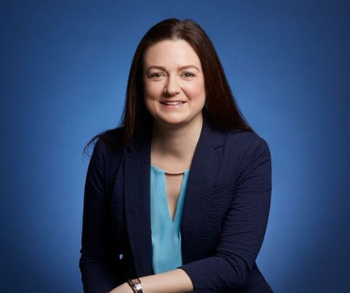In late November, CMS announced an expansion of the Hospital Without Walls initiative to include the Acute Hospital Care at Home program, which provided regulatory flexibility for hospitals to treat patients requiring acute inpatient admission in locations outside the hospital. It waived the requirement that for certain acute conditions, 60 in total, nursing services must be provided on premise 24/7.
Like so many health care regulatory actions and waivers that have been issued during COVID-19, the future of CMS’ hospital at home program is uncertain. The waiver is set to expire when the government ends the COVID-19 pandemic public health emergency. With the Delta variant surging, no one knows when that will happen. Moreover, it remains to be seen what CMS will do when that day comes and if these kinds of flexibilities will be made permanent by the agency or another government entity.
But no matter what happens, one thing is clear: Health care organizations are interested in hospital at home.
“There have been around 140 or 150 hospitals that have applied for and received the waiver,” says Linda DeCherrie, MD, Professor of Geriatrics and Palliative Medicine and Clinical Director of Mount Sinai at Home. She says the number would have been higher, if not for the uncertainty surrounding the pandemic. “Two months ago, people were hesitant to apply for it because it seemed as if the pandemic would end soon. With the Delta variant surging, we’re not sure when it’s going to end. I hope more hospitals decide to apply. I think that’s the reason there weren’t more.”
The number may actually be closer to 200 participants, according to one estimate. Mount Sinai was one of the first of six health systems to receive the waiver when CMS made the announcement in November of last year. The New York-based health system has been doing some form of hospital at home since the mid-2010s, DeCherrie says, but the CMS waiver has allowed them to take in more Medicare fee-for-service patients, which is a large population the health system is serving.
“I am hoping there is some Senator who thinks this is important enough and will introduce a bill or add it to a bill to extend the current waiver for a few more years,” says DeCherrie. “We should then use that time to develop a long-term payment strategy for hospital at home. I’m hoping that since we have 150 or so that have applied for this waiver, there isn’t a sudden stop. Hospitals have invested quite a bit of effort into this.”
UMass Memorial starts down the hospital at home journey
Another system that applied for the waiver, UMass Memorial in Central Massachusetts, is on the other end of the hospital at home journey from Mount Sinai having just announced the initiative in June of this year. UMass CEO Eric Dickson, MD, says that the health system had always wanted to do this kind of program for years but felt there was no way for them to get paid for it to offset the large investments.
“Without the Medicare waiver this couldn’t happen. We wanted to do it, but we couldn’t afford to take that big of a loss,” Dickson says. He says it costs $5 million to get the program going and then another $3-5 million every year. “The waiver allows us to get paid for providing the service to Medicare beneficiaries and hopefully it spurs commercial payers to do the same. The program will probably break even in year two or three. Better care for our patients and break even? We’ll take that deal every time.”
Dickson says that the early data from the hospital at home forerunners has been positive. In fact, one study on the Johns Hopkins model found that at-home care was 32 percent less than traditional hospital care with shorter length of stay, no difference in readmission rate and better overall patient satisfaction. These programs also reduce the risk of hospital-acquired infections and hospital-related falls, which Dickson says happen quite frequently when elderly people wake up in a hospital bed in the middle of the night confused about their surroundings.
UMass Memorial will use remote patient monitoring and telehealth to track patient vitals and keep “digital eyes” on them around the clock. The health system is partnering with Current Health for the remote monitoring piece. Along with that, UMass will have a mobile fleet of clinicians that will go to the home to administer medications on a frequent basis, deliver food, supplies and other social services, and in general, ensure those patients can stay at home.
In terms of what patients are going to get first consideration for this initiative, Dickson says they are looking at acute conditions that are predictable with a low probability of deterioration and few, if any, complex requirements, such as frequent imaging. For example, if a patient has a bad infection in their leg, they can be treated at home.
Thus far, Dickson says doctors and nurses are supportive of this initiative with more people having applied to spots than are available. Dickson is also confident that patients will buy in too.










